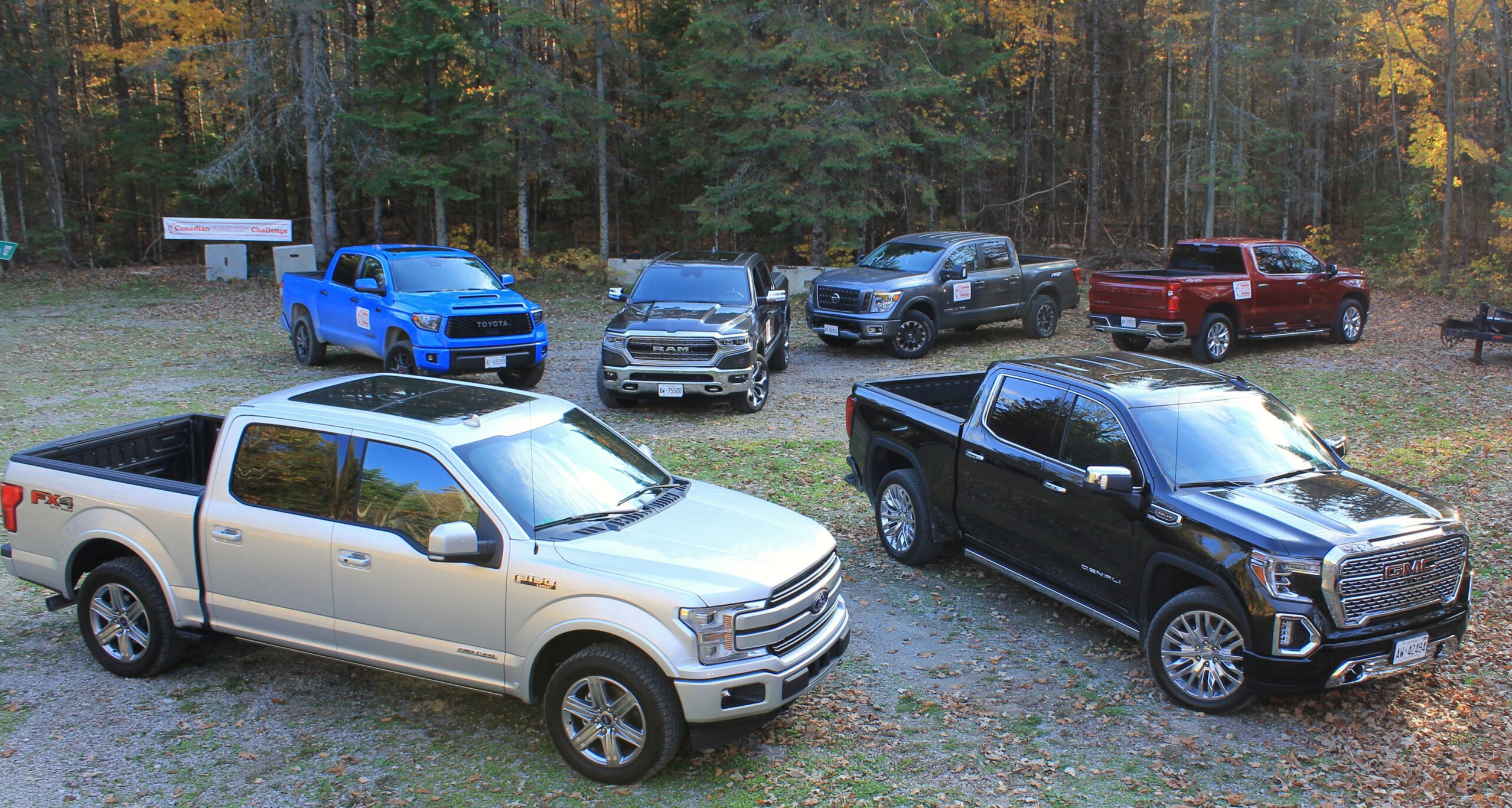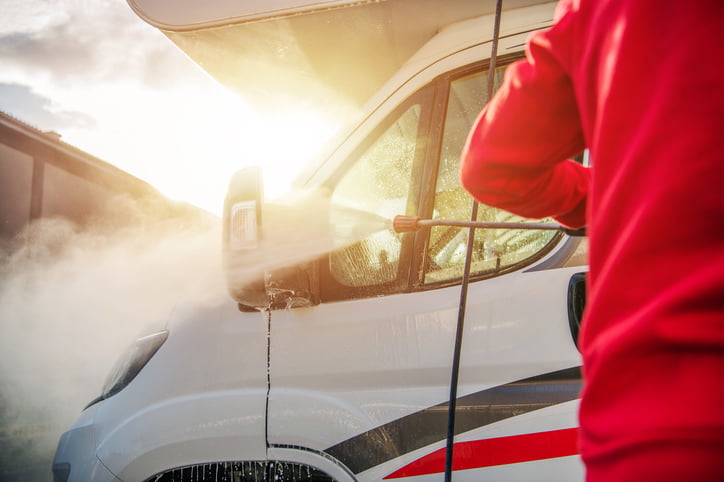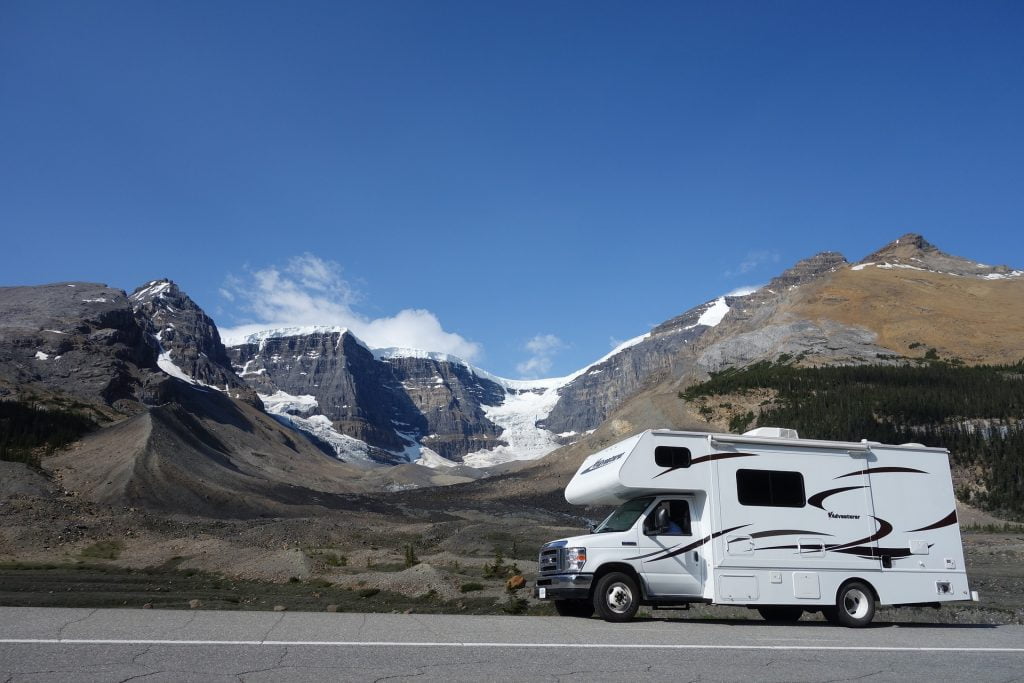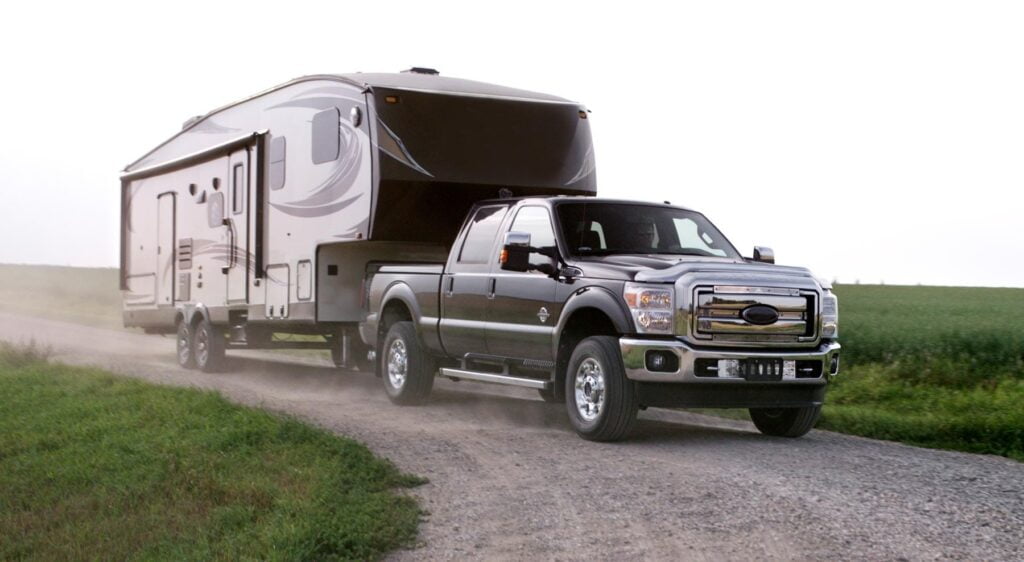Let’s get the obvious out of the way first: trailers come in all sizes and with various purposes. They can weigh 200 to 30,000 lbs. If you own one, you already know the weight of yours and this is the first note on your buying list. Looking for a new tow vehicle will revolve around that list. Next, know all the specs as they relate to your trailer. This lets you begin the search process with confidence. Be prepared to educate the salespeople – very few know anything about towing and even less about what’s required on the vehicles they sell. They will however be able to look it up once you tell them what you need.
This article provides tips to help you prepare for how to choose your new tow vehicle. Whenever you do make the trip to the dealer have your “must have” list in hand!
Of course, apart from towing, there will be many other considerations in your new vehicle search. From personal wants, family needs, cargo requirements, drivetrain variations and more. However, if the vehicle won’t tow right – what’s the point? In fact, before the salesperson points you towards the pretty shiny red one, refer to your list and have them confirm it will do the job you need it to do.
Trailer specifications list: Have these numbers in hand when on the hunt. These will be from your current trailer or the one you intend to buy.
- UVW (Unloaded Vehicle Weight)
- GVWR (Gross Vehicle Weight Rating)
- Payload (*is the difference between GVWR and UVW)
- Tongue or pin (fifth wheel) weight
- Length
- Number of axles
- Brakes: Y/N
- Hitch type
- Ball size
- Electrical connector needed: 4 or 7-pin
Unless you are completely new to recreational towing (in which case, welcome!) you no doubt already have a tow vehicle or memories of one. This real-world trailering experience you possess is valuable; it is the basis of your new must-have list. Not just what you want but, perhaps more importantly, what you don’t want. Negative experiences tend to leave lasting impressions.
As we are discussing the towing of a wide spectrum of trailers – the vehicles available in the market today to tow them are just as wide. Certainly, pickup trucks are the most favoured tow vehicles, but many smaller cars, SUVs and minivans can make fine tow vehicles when paired correctly. As such we need to look at the general needs of everyone who tows regardless of gross trailer weight.
However, before we get to your must-have list here is a general list of what you don’t want.
- If the vehicle you’re looking at doesn’t have a towing package available the aftermarket might be able to equip you. But I’d prefer to buy the vehicle with a factory tow package installed. Without a tow package there won’t be a factory wiring harness and no technical allowances made for transmission gearing or auxiliary cooling. On the other hand, vehicles with towing packages will have these items and the appropriate hitch installed for trailer towing and/or have fifth wheel hitch provisions.
- How will it handle? If you are towing from the bumper look at the overhang. Overhang is measured from the rear axle to the hitch ball. This measurement is than taken as a percentage of the wheelbase – anything less than 30% is good – with less being better. The simple reason is that more trailer weight is transferred directly to the rear axle. Conversely a long overhang acts like a teeter-totter; it can affect steering. A weight distributing hitch will counteract much of this sag – but, shorter is still better.
- Avoid short wheelbases and tall vehicles – (sorry, Jeep Wrangler). Look for a low centre of gravity on a long wheelbase. This vehicle will usually come with stiffer suspension that will discourage side to side motion in cross-winds.
- Tall, knobby tires look good, however they aren’t the best for towing. A low-profile tire that doesn’t bulge over the rim will give you much better steering feel and control. Check the tires to see if they are stamped with either a P indicating passenger car or and LT meaning light truck (these are often available on minivans and SUVs). The difference is in the sidewall stiffness and the weight capability. Depending on the load range, LT tires can carry upwards of 60 psi vs. 35 psi in the same size P-tire. You may be able to specify them when you order.
Features you probably want on your must-have list:
- Does the manufacturer offer a tow package on the vehicle? Buy it. Trailer wiring will have been factory engineered – less chance of problems. The hitch is attached to where the designers intended and based on the weight it will tow, vehicle engineers include extra’s like tranny coolers, an extra battery, bigger radiator and different transmission gearing as well as offering lower rear differential drive ratios. Not only does this option eliminate any issues over voiding a factory warranty, but it means you only have one source to deal with if any issues arise.
- Do they offer tow mirrors? Get them. Even with small trailers good mirrors are important. And while you would think heated tow mirrors would be a standard feature when ordering the tow package, they often are not. Ask about this. Being able to see all the way down the side of your trailer is the law most everywhere.
- Compare brands by looking for the largest brake rotors and whether they offer a tow/haul transmission mode – or at least a manual shifting option on an automatic transmission.
- Integrated trailer brake controller. Most factory tow packages now include the controller – but not all, check to be sure.
- Exhaust brake (with diesel engines). Whether automatic or manually activated this is a feature you’ll want.
Matching the powertrain to your intended load.
- Gas or diesel? V6 or V8? Turbo or not? Transmission type? What about gear ratios? These are a few of the questions you’ll have to answer when spec’ing your new vehicle. Because of the work you’ve already done in regard to choosing your tow package based on the weight and needs of your trailer – you’ll have already narrowed the options for matching powertrains to just a few. Now check the manufacturer’s website to find out what the powertrain will tow. This research is particularly important because manufacturers advertising tends to tout only the highest tow numbers they offer, without explaining which version of the vehicle it applies to. Past this here are a few general rules-of-thumb to consider:
- A diesel engine will always give you more torque than a similarly sized gasoline engine. Where this matters is in mountainous terrain where long grades require more low-rpm torque to hold posted speeds.
- Turbo-charged gasoline engines make more power than normally aspirated ones, however when towing they’re fuel economy is also much worse. Consider how often and much weight you tow.
- Rear-end gear ratios can change torque numbers by requiring more or less rpms to complete a tire revolution. Always consider your trailer weight and geographic region when ordering the rear-end gear ratio. For instance: with a high ratio (like 4:10 to 1) you can create more power and torque with a smaller displacement engine.
- Some manufacturers will offer different transmissions with the same engine. Consider these from a weight bearing and fuel economy standpoint.
Today there is also a third area of knowledge needed when spec’ing a new tow vehicle. This concerns the new electronic “driver-assist” features available in the brand you are interested in. I’m sending you off to do this homework because after more than a decade of concentrating on horsepower and weight bearing capability advancements, I see manufacturers’ now shifting focus towards offering more driver-assist systems. These are necessary to handle the larger trailers they’ve designed their vehicles to tow.
These features are coming quickly; with many being debuted in just the last year or two. Knowing about these is important to any future buying decision.
How important? Think of it this way – the heavier the load the more “driver-assist” features you will want and appreciate in your tow vehicle.
These include electric steering to hold the crown of the road, variable steering that changes ratios at different speeds, exhaust braking to save the vehicle brakes, integrated trailer brake controller for smoother stopping, anti-sway trailer control, interactive cruise control to hold set speed, multi-camera blind-spot detection for close quarters and passing situations, manual gear selection, tow/haul mode for managing power and trailer tire pressure monitoring. There are more of these electronic assists coming each year.
Interactive cruise control is a good example of an anxiety relieving device. Available in most new trucks now it joins several systems (ABS activated braking, transmission gearing, exhaust braking, and radar) to manage even a heavy load. With this cruise set a large rig can drive up and down long steep highway grades, holding a set speed without the fear of over speeding. The driver just has to steer.
Each of these features is aimed at easing the towing burden of the driver. The net result? Less anxiety and a safer drive.




